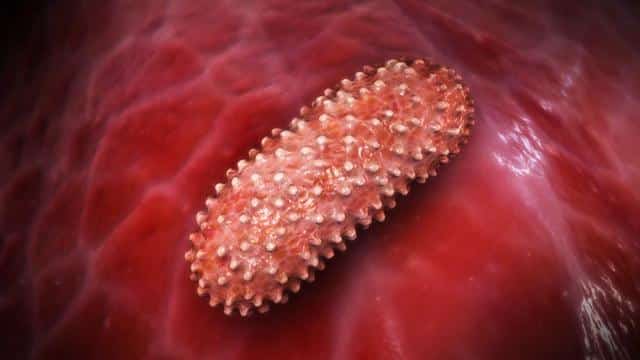Dealing With Small Beetle Invasions
It starts with one or two harmless specks on the window frame. At least, that’s the way it’s been at my house and cabin. Then suddenly, you’re swatting at dozens of red or orange beetles clustering in the corners of your ceilings, crawling along your walls, and dive-bombing your lights.
If you’re dealing with an invasion of ladybugs—or, more likely, their lookalike cousins, the Asian lady beetle—you’re not alone. It’s been a bit of an invasion here in Northern Illinois.
These insects might be beneficial in the garden, but once they invade your home, they’re a nuisance. Fortunately, you don’t have to resort to toxic sprays to reclaim your living space. Here’s how to deal with them naturally.
Know Your Enemy: The Truth About Ladybugs Indoors

Not all “ladybugs” are created equal. The kind most people love—the native red or orange beetle with small black spots—tends to stay outside and helps control aphids in the garden. But the ones invading your house each fall and winter are usually Asian lady beetles introduced to North America decades ago for agricultural pest control.
Unlike their native cousins, Asian lady beetles are aggressive, bite when threatened, and release a foul-smelling yellowish liquid when disturbed. They’re notorious for slipping into homes through cracks, vents, and window frames as they search for warm places to hibernate.
Seal Off Entry Points Before They Move In
The first and best defense is to stop them from getting inside in the first place. These beetles typically swarm on sunny sides of buildings in the fall and squeeze into the smallest openings. Inspect your home for cracks, holes, and gaps, especially around windows, doors, siding, and utility pipes.
Use caulk to seal any cracks, replace worn-out weather stripping, and install door sweeps. Repair damaged screens and ensure attic vents, soffits, and chimneys are covered with fine mesh. A tightly sealed home is your strongest natural defense.
Vacuum Now, But Do It Smart
If they’re already inside, your best bet is to vacuum them up—but with a twist. Ladybugs release a stinky, staining secretion when they feel threatened, and the heat and trauma of a regular vacuum cleaner can trigger this response.
Instead, use a shop vac with a pantyhose stretched over the hose inlet, secured with a rubber band. This catches the bugs before they hit the vacuum bag and lets you release them outside, far from your home.
Alternatively, you can trap them in a soft-sided container and relocate them away from buildings. Avoid crushing them, which can leave smelly stains on walls and curtains.
Harness Natural Repellents
Asian lady beetles dislike certain natural substances. You can create a DIY spray using essential oils that repel them, such as citronella, eucalyptus, clove, and lemon. Mix 10–15 drops of oil with water and a few drops of dish soap in a spray bottle, and spray around doors, windows, and suspected entry points. This won’t kill them, but it may convince them to stay away.
Bay leaves are also said to deter ladybugs. Place them on window sills and near vents to discourage entry. Another simple trick is to use diatomaceous earth (DE), a powder made from fossilized algae that’s harmless to humans and pets but deadly to insects with exoskeletons. Sprinkle it in cracks, crevices, and along baseboards where you see activity.
Light Traps That Actually Work
Since ladybugs are attracted to light, a homemade light trap can lure them into a container. Tape a small LED light to the underside of a funnel and place it over a jar or plastic jug. Turn off other lights at night and let the trap do the work. The beetles fly toward the light, fall into the funnel, and can’t escape. Release them outside in the morning.
Commercial ladybug traps are also available, but be wary of those with chemical lures. Stick to mechanical or light-based traps if you want to stay pesticide-free.
Keep Your Home Dry and Cool
Ladybugs prefer warm, humid environments. Running a dehumidifier can make your home less appealing, especially in basements or attics where they often congregate. Lowering your thermostat by a few degrees during an invasion may encourage them to leave or reduce activity levels.
A Warning About Squashing
Smashing these tiny invaders is tempting, but doing so often worsens things. The yellow fluid they secrete smells awful and can stain walls, drapes, and furniture. It also contains compounds that may trigger allergies or asthma symptoms in sensitive individuals. Stick to the vacuum, traps, or relocation.
What to Expect Next Year
If you’ve had a ladybug problem once, it’s likely they’ll return next fall unless you take action now and through summer in preparation for the big fall/winter clustering.
Insects leave behind pheromone trails to attract others from their species, so wash down window sills and walls with a mild vinegar solution to erase their scent. Keep sealing, caulking, and patching throughout the year, and stay vigilant in late summer when they begin scouting for winter shelter.
You Can Beat Them Without Chemicals
An infestation of ladybugs may seem like a small problem. Still, it’s serious enough to demand action when they take over your home. Thankfully, you don’t have to pollute your living space with chemical pesticides to get relief.
With a few natural methods, persistence, and preventative measures, you can reclaim your home—and help your readers do the same.










